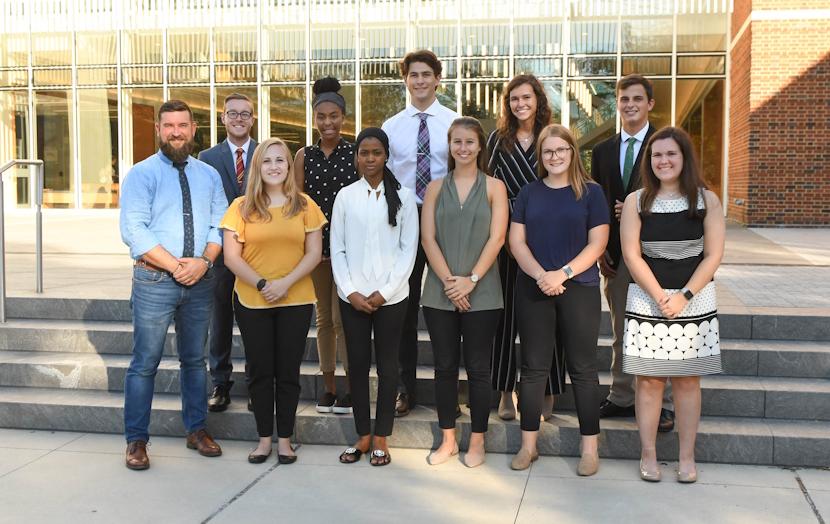
Current & Past Presidential Citizen Scholar Program Projects
The Presidential Citizen Scholars Program Capstone Projects are the culmination of a Presidential Citizen Scholar's work through their journey in the PCS program. These capstone projects represent the legacy of civic leadership, civic research, civic scholarship, and civic action that PCS Scholars leave in the Greater Salisbury community and Mid-Atlantic region.
2025 Projects:
-
Light Street Beautification Mural
Project Missions
Through visits to Light street and other community events, we talked to people in the community, both adults and children. During these events we gained personal testimonies from the communities. They were upset regarding aggressive driving and safety on Light street.
Light street is positioned in between the Newton Community Center (NCC) and the community garden/playground. Children fill the community center everyday, all year and are constantly running in between the NCC and garden/playground.
To aid in designing the asphalt art , we have collected drawings from the local community through block parties, back to school events, and trunk or treats. While collecting data, we asked parents what they thought about their OWN family coming to paint their OWN street, and they loved it.
Through these conversations we have found a high interest in implementing a speed bump in addition to the beautification project. Hopefully after our mural we will implement a speed bump and mural legislation as well to further aid the communities desire for safety.
Brandon Bell
Brandon Bell is the owner of We Are Limitless Studios. You can see many of his murals featured around the City and Town of Salisbury. He began working with us in 2024, taking the reins on the design. On paint day, he then sketched the design on the ground and let us tape and paint away.
Project Background
As new PCS scholars in 2023, we formed a group around a project that a past scholar was unable to complete. This group and project has now evolved into a mural that is actually being painted on the street.
We collaborated with a past scholar, Mellissa Florez, to gain more information and insight on what her thoughts were while creating the project.
Inspired by her ideas and research done at the NCC by the 2021 PCS cohort, we made them our own. We did this through countless ideas, design drafts, and community and professional input. Brandon Bell was integral in creating the finalized design. He used a drawing from the chalk data, Melissa’s separated spaces, and the slogan from the NCC. The larger than life flower brings a sense of surrealism that evokes a reaction from the viewer.
Scholars:
- Mauren Krauser, Junior
- Kailah Caliskan, Junior
- Miranda Surrett, Junior
- Julia Dyer, Junior
- Zoe Clarke, Junior
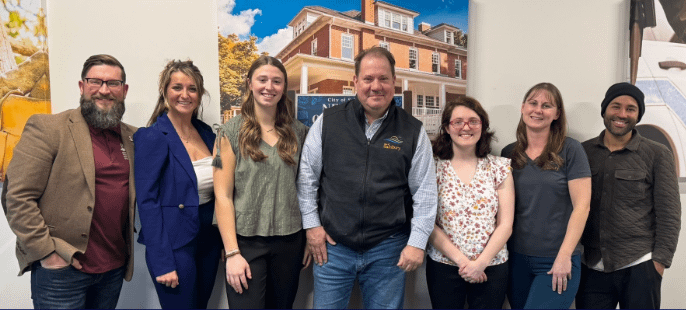
-
Community Strengths & Assets Survey
Project Missions
In collaboration with the Wicomico County Local Management Board, the Somerset County Local Management Board, the City of Crisfield, and the City of Salisbury, our primary objective was to investigate the assets and strengths of communities in Somerset and Wicomico Counties through an IRB-approved anonymous survey (SU IRB Protocol #375).
Purpose
The most recent community survey was conducted prior to the pandemic, and the communities have since undergone significant changes. Our strengths-based survey reflects communities today, empowering them as opposed to criticizing them. Responses from community members predominantly highlight positive experiences in Somerset and Wicomico Counties, reinforcing the value of a strengths-based perspective. Our data and analysis will mobilize community leaders and inform future civic projects in Somerset and Wicomico Counties.
Survey Components
Our survey was available to anyone over the age of 18 who lived in Wicomico, Somerset, or Worcester Counties (MD). Additionally, our survey was translated from English into Spanish, Haitian Creole, and Korean, assuring our work would include the diverse populations of the region.
Our survey consisted of 10 questions. Questions 1-7 were quantitative and asked participants to rank their communities’ access to assets such as schools, nonprofit organizations, housing, transportation, extracurricular activities, and more. To measure these rankings, we used a scale that ranged from “strongly disagree” to “strongly agree, ” allowing participants to indicate their perspective on how well their communities provide crucial resources.
Questions 8-10 were qualitative and allowed participants to provide greater detail about the strengths of their communities, the gifts and talents of people in their communities, and what their communities could use more of respectively.
Scholars:
- Lauryn Dennis, Junior
- Neila Henrice, Junior
- Tyler Hummer, Junior
- Zainab Jabeen, Junior
- Dagmawit Kebede, Junior
- Jody Kieffer, Junior
- Ashley Marcum, Senior
- Michael Ogbonna, Junior
- Jahnaiya Sutherland, Junior
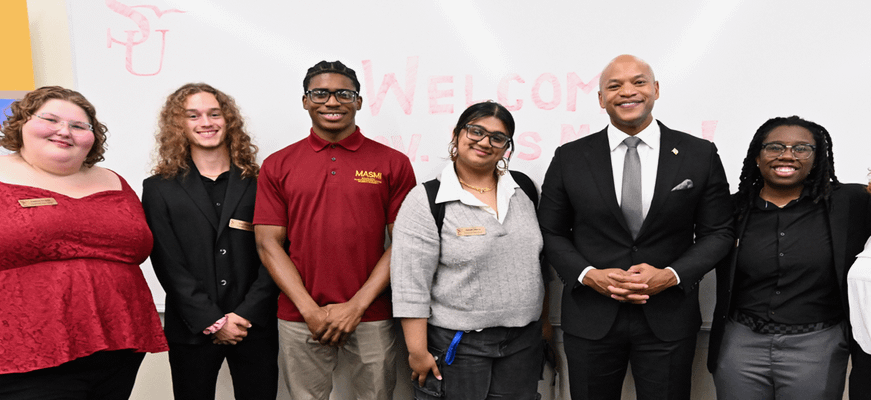
2024 Projects:
-
Period Power
Background Research
According to the TidalHealth, Somerset County and Wicomico County Health Department’s Community Health Needs Assessment (2022), 19% of children in Wicomico County live in poverty and 50% of children are eligible for the free school lunch program. In Maryland as a whole, 12% of children live in poverty. Wicomico County is 7% higher than the state average when it comes to child poverty. From this data, it is assumed that access to hygiene products may be sacrificed if families are living in poverty and are not able to prioritize monthly expenses for menstrual products.
On July 1, 2021, House Bill 0205 became effective, requiring the Provision of free Menstrual Hygiene Products in Maryland Public Schools. This legislation calls for menstrual products to be available to all students via dispensers in women’s restrooms. Currently, little is done to enforce this legislation in public school restrooms, meaning that students do not have access to consistent and discrete menstrual products from their schools as mandated.
Mission
We have created Period Power to address the inequalities we found in our research and through word of mouth. With a target audience of middle school students in Wicomico County, we will provide sustainable and discrete feminine hygiene products and resources. We are also working to address the stigma of menstruation in a community that tends to be a little more conservative when it comes to discussing reproductive health.
Cycle Bracelets
To address stigma within the community, we tabled at the October Third Friday to educate about menstrual cycles. The cycle bracelets are comprised of four different colored beads, with each color representing a different phase of the menstrual cycle - menstrual, follicular, ovulatory, and luteal. We made 52 cycle bracelets with the community and handed out informative pamphlets to community families.
Pilot Program
We partnered with Aetna Better Health and Wicomico County Public Schools (WCPS) to pilot our project.
On February 9th, we assembled 1,000-period packs with the help of WCPS English-Language Learning (ELL) high school students. Each pack contained 3 pads, 1 package of sanitary wipes, 1 hand sanitizer, and an Aetna information card.
These packs have been distributed to the Wicomico Middle and Salisbury Middle schools to provide a discreet hygiene resource for students who menstruate. Currently, roughly 50 of these packs have been handed out. We also created menstrual cycle bracelets with the ELL students to educate them on the phases of the menstrual cycle in a creative and interactive way.
Scholars:
- Maggie Atherton - Junior
- Lian Peach - Junior
- Abigail Potter - Senior
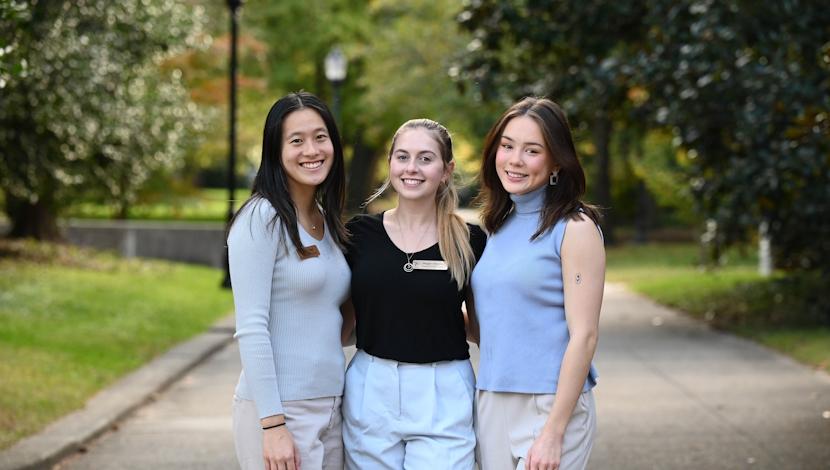
-
Launching the first NFL FLAG in Salisbury & Wicomico
Mission
Our mission was to create a sustainable youth flag football program that targets the Westside of Salisbury. We have partnered with the city of Salisbury, NFL flag and Wicomico County to create an affordable and sustainable flag football league for boys and girls ages 7- 15. Our league is set to take place at Waterside Park and Billy Gene Jackson Sr. Park, both located on the Westside of Salisbury. We have chosen to target the Westside of Salisbury due to the lack of youth athletic programs in the area, with those available being over $100 to register. Due to the Westside of Salisbury being a lower-income area compared to others in Salisbury, we decided to implement opportunities for the youth in that area.
Grant Funding
With the assistance of Tim Bozman, we were able to apply and successfully receive a $4,999 grant that goes directly to the funding of our league. This grant targets mentorship and positive outcomes for the youth in Salisbury. With this funding, we were able to cover the league scholarships of 46 players, totaling to $1,500.
The remainder of the funding went into improvements for the league, such as NFL Flag jerseys for each player, as well as pylons for the fields. Along with the grant from Wicomico County, we were also granted with funding from ShoreCorps AmeriCorps. This grant totaled to $240 and was used for social media ads on Facebook and Instagram to help market the Salisbury NFL Flag Football League.
Purpose
Waterside Park, located in the heart of Westside of Salisbury, has had a lack of activity and involvement, despite the large field space available for use. Our mission was to put use to unused field space in a community with youth who need it. Flag football is a quickly growing sport and a safe alternative to tackle football. In the City of Salisbury, we believe that a league located in the Westside of Salisbury will directly impact the youth and help evolve youth sports in the City and County.
Scholars:
- Joshua Adey - Junior
- Aslynn Gorkos - Junior
- Aidan Stanislavsky - Junior
- Daniel Whiddon - Junior
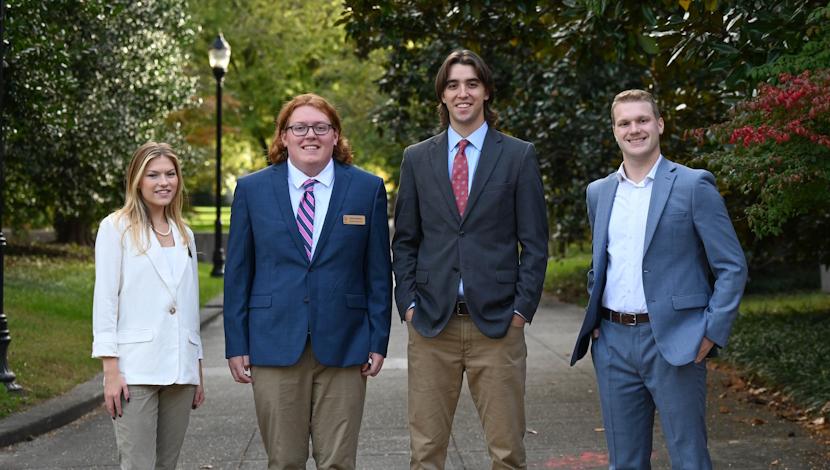
-
Road Safety & Transportation Equity on Salisbury’s west side
Introduction
Our Presidential Citizen Scholars (PCS) Capstone Project was to investigate road safety and transportation equity on the West Side of Salisbury, Maryland. Our primary collaborator was the City of Salisbury, especially the manager of transportation. The city of Salisbury wanted to work on the Vision Zero initiative. The goal of Vision Zero is to eliminate traffic fatalities and serious bodily injuries by 2030 (Vision Zero).
The City expected to receive a grant in the Spring of 2024, so they wanted to focused on the Westside of Salisbury to see how they can implement some features on the roads to improve transportation safety in the area. The Westside is a marginalized community with numerous Haitian and Hispanic immigrants. The city noticed a gap between their targeted population and the city. That is where we come in.
To aid in this effort, we created an anonymous, confidential Institutional Review Board (IRB) survey under protocol number 239 available in English Haitian Creole, and Spanish, to gain insight from the community to communicate their opinions as it relates to the safety of pedestrians, walkers, and cyclists.
Futhermore, we inquired about their most common transportation method. Additionally, we asked where they would like a bus stop added on the West side since not a single bus stop was present in the area during the survey collection process.
Research and Data Collection
To encourage people to fill out the survey to get data, we first had to establish trust with the community because the immigrant population do not often trust government officials.
We distributed the survey on LinkedIn, Instagram, SU Today, Salisbury News letter, and Facebook.
To further promote the survey, we went to the World of Life center, a Haitian church on the Westside where many people were eager to take the survey. We went to Culturefest. We participated in ThirdFriday downtown twice. The first time was to promote the survey, and the second was to promote the new bus added on the West side due to the survey data.
After collecting and analyzing the data, we shared it with the community, the City of Salisbury Council, the transportation manager team, Posters on the Bay, Shore Transit, and SUSRC.
Data Results and Analysis
Delving deep into the data results of our survey, we divided our analysis between the entire population and a subset thereof. The subset, drawn from our population, consists of frequent visitors and potential residents of the West Side. Overall, we received responses from 273 participants in our survey. However, we require data from respondents who provided answers beyond question 1 ("Are you 18 years or older?") to conduct a meaningful analysis. Utilizing Jupyter Notebook and Python libraries such as pandas, numpy, and matplotlib, we successfully filtered out responses that only addressed question 1. Following this filtration, our survey comprised a total of 268 respondents who provided answers to subsequent questions, affording us the opportunity to analyze the data we truly seek.
Scholars:
- LaMaree James - Senior
- Stephora Cesar Alber - Junior
- Andersen Herman - Junior
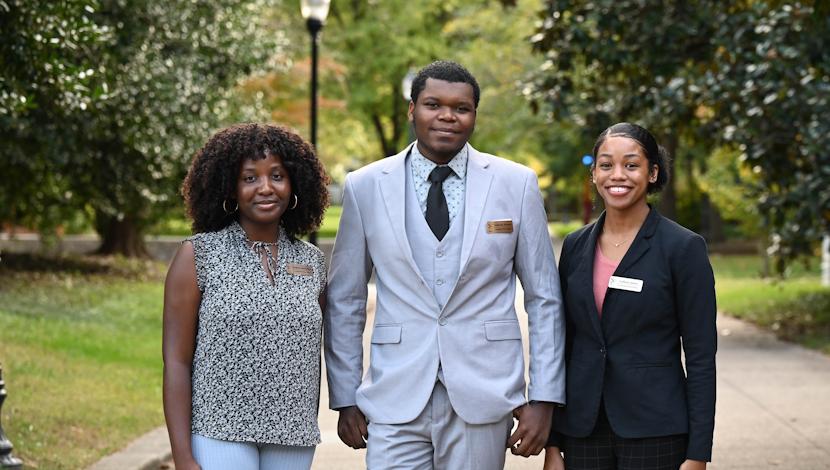
-
Forget-Me-Nots: a program for youth in Wicomico County
Mission
The mission of our Presidential Citizens Scholars (PCS) project was to collaborate with community partners who work with youth affected by drug abuse to ensure they are not forgotten and to teach them skills they will carry with them forever.
Everyone Starts With Why
Makenzie: Growing up, I had split parent homes. My dad was an alcoholic so being at his house was very lonely and trying to take care of myself. At my mom’s I felt like a back burner because my sister was more important to make sure she was okay. So, with these experiences I felt as if I had to take care of myself and help take care of her. Sometimes I felt as I was the adult in the house.
Hanna: My “Why” for this project is that I have always felt a connection to it while not being directly affected. When I was in third grade, I had a friend in my class who asked me to take a sip of my water because her mom used all her money for drugs, and their water was turned off. I continued to bring her water bottles every day after this.
Peyton: My “Why” for this project started when I knew I wanted to be in the healthcare field. I have an innate instinct in wanting to help others and with this project, I’m able to combine my knowledge from my major with helping children who are affected by drug abuse and providing support through this difficult time for them.
Richard: My “Why” starts with my mom, she never had it as easy as I did. Her life was filled with tough times due to the drug abuse of her mother, many things were not provided for her, mainly support. Now I get the opportunity to fill in but a portion of what my mother could have benefited from in her youth.
Navigating Challenges...
Beginning our project, finding a place to set our foundation was difficult. However, after communicating with Anna Hanzsche and establishing rapport with an established nonprofit community such as the Boys & Girls Club, it became clear that this was the place housing youth that could benefit from our project idea.
Collaborating Efforts...
We collaborated with the National Association for Children of Addiction (NACoA) to discuss the use of their drug addiction curriculum for children and their established evaluation process.
Connecting the dots...
After working closely with the NACoA, we facilitated a connection between the NACOA and Anna at the B&G club to create the pathway to lay out the plan for our pilot project.
The end of the beginning... After training to be volunteers in the Boys & GIrls Club and NACoA, we launched our pilot project. Using the NACoA curriculum as a guide, we are currently in the process of finishing out our 8- week pilot project with an evaluation at the end to assess whether this program is sufficient to implement in other Boys & Girls clubs across Maryland. This is hopefully just the beginning of this amazing project.
Scholars:
- Makenzie Kennedy - Junior
- Hanna Bertholdt - Junior
- Peyton Rayne - Junior
- Richard Brown - Junior
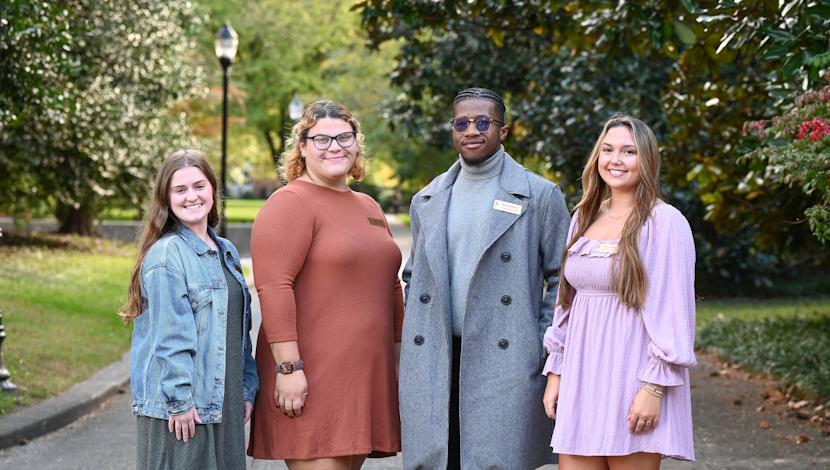
2023 Projects:
-
Combating the Youth Homeless Crisis Through Community Action
Purpose
The mission of our Presidential Citizen Scholars (PCS) Capstone Project was to connect and expand adequate professional development and educational resources for youth experiencing homelessness, specifically with consideration toward LGBTQ+ youth in the community.
Background
Our group was called upon to conduct this project through initial conversations with City leaders and community members. When we asked City leaders what some of the most pressing dilemmas, also known as wicked problems, were in the City of Salisbury we were told that youth homelessness was one of the most pressing concerns. Combating the Youth Homeless Crisis Through Community Action Youth, especially LGBTQ+ youth, are disproportionately impacted by the homelessness crisis due to the stigmas attached to the marginalized identities they may hold, combined with legal age barriers that may prohibit them from receiving various services. The COVID-19 Pandemic only heightened these disparities.
Initial Steps
After meeting with City leaders in our first semester of the PCS Program, we began to construct our project around personal lived experiences in combination with the growing youth homelessness concerns in the Mid-Atlantic Region and the Delmarva Peninsula. This led us to begin collaborating with the Wicomico Public Library.
In our second semester, we worked towards making our project sustainable, along with providing as many resources as possible to youth at risk of homelessness. We determined that the specific location of the Wicomico Public Library Sarbanes Branch in Downtown Salisbury was a perfect location to reach the homeless population, specifically youth at risk of homelessness because of the prevailing community role that the WPL fills in the region.
We had numerous meetings with Library leadership to discuss areas of concern as it pertains to homeless youth. The WPL leaders educated us on the various needs of youth experiencing homelessness which included: luggage to carry clothes, business attire, access to jobs, and access to GED programs which are led on-site at the Sarbanes Branch by Wor-Wic Community College.
With the information we gained from the WPL, we were able to narrow our project to become sustainable in combating the homeless crisis by gathering community resources in one setting through a resource fair that youth can access easily and that Library leadership would be committed to maintaining at least twice a year.
Scholars:
- Juan Adams - Junior
- Ryan Devine - Senior
- Jaydan Fogo - Junior
- Nero Schrader - Senior
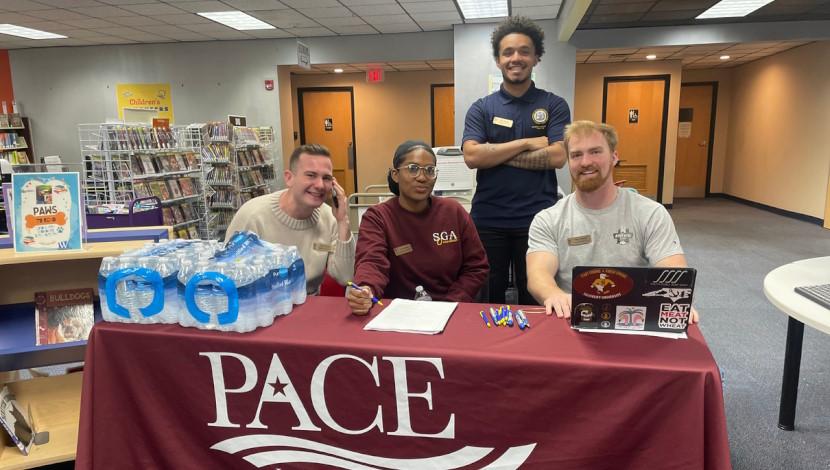
-
Bioremediation of Urban Runoff at BISM
Health of the Chesapeake Bay
Impervious surfaces are constructed materials that prevent rainwater from passing through and are a major contributor to pollution, urban heat islands, climate change, and other notable environmental issues today (Salerno, et al., 2018). Most traditional infrastructure systems, like parking lots and roads, are known as 'gray' infrastructure. Gray infrastructure significantly changes the physical landscape, impacting the environment and delivering high maintenance costs (Oijstaeijen, et al., 2020).
Gray systems, including impervious surfaces, are the most common infrastructure built, and they are inefficient at mitigating stormwater runoff, flooding, and pollution (White, 2022). The impervious surfaces in gray systems exacerbate the issue of urban runoff on the Delmarva Peninsula as excess oil, acids, and sediment pollutants all settle on roads, sidewalks, roofs, and parking lots, which are then washed into water drains and larger bodies of water through ditches, streams, and rivers. Urban runoff in the City of Salisbury and Wicomico County ultimately ends up washing into the Chesapeake Bay Watershed, disrupting organisms and the ecosystem (Pollack, 2022).
The Chesapeake Bay is Maryland’s most valuable natural resource; it provides many residents of the Eastern Shore with a means of livelihood and employment. As a result, urban runoff from Salisbury is directly tied to the health and economic stability of the Eastern Shore (Hastings, 2022).
The Chesapeake Bay has been visibly struggling with pollutants since the 1970s. Environmental and Bay specialist, Jerry Schubel, notes that the future of the Chesapeake Bay will be determined “through a combination of nature and human action” (Schubel, 2021, p. 1). Community efforts to remedy the environmental crisis in the local context of Salisbury are making an impact on the health of the Chesapeake Bay.
There are many individuals and organizations working on creative solutions, but more can be done through collaborative partnerships with students at local colleges and universities. One such solution is bioremediation, which is the practice of removing impervious gray infrastructure like pavements and parking lots and replacing them with native green infrastructure such as native bushes, trees, and plants.
Global Bioremediation Efforts
Global efforts regarding sustainable development and redevelopment, including the bioremediation of impervious surfaces, have been gaining more attention and momentum over the past decade. Learning about these global efforts has served as an inspiration throughout our Presidential Citizen Scholars Capstone Project.
An example of a project that is one of the first of its kind was led by a group of engaged citizens in Peterborough, Ontario, Canada. Volunteers worked together at Water Street to depave a parking lot that was not being used. This effort has been called the “largest project of its kind in Canada” (Corrigan, 2019).
Another significant inspiration has been Depave, a progressive nonprofit in Portland, Oregon which has been championing urban depaving. Depave works to redevelop urban spaces to take them from "parking lots to paradise" through "constructive destruction" (Depave, 2023). Depave's collective mission is to “empower disenfranchised communities to overcome social and environmental injustices and adapt to climate change through urban re-greening”. Investigating Depave's previous re-greening projects informed our approach to this project.
Local Bioremediation Efforts
According to William White, Transportation Manager with the City of Salisbury, any small steps that can be taken to transform impervious parking lots into green spaces will benefit the environment, the economy, and the Salisbury community (White, 2021). According to Wicomico's Municipal Separate Storm Sewer System Annual Progress Report (MS4, 2019), there is a total of 3,400.77 impervious acres in Wicomico County, which includes the Salisbury area. The report states the County's plan is to address 20% of the total impervious land in the County as part of the restoration requirement, which includes bioremediating 667.86 of the initial 3,400.77 acres by 2024.
Bioremediation efforts in the City of Salisbury and Wicomico County will continue to demand collaboration and creativity from our governmental agencies, nonprofit organizations, and citizens in the local community (White, 2022). Our PCS project was designed to operate within this intersectional space to ensure that our efforts would extend beyond SU's Presidential Citizen Scholars Program to make an immediate environmental impact and leave a legacy for other SU students and community members to follow.
Scholars:
- Charles Grayson Laird - Senior
- Christoper Bryce Machalek - Junior
- Emma Tarquinio - Senior
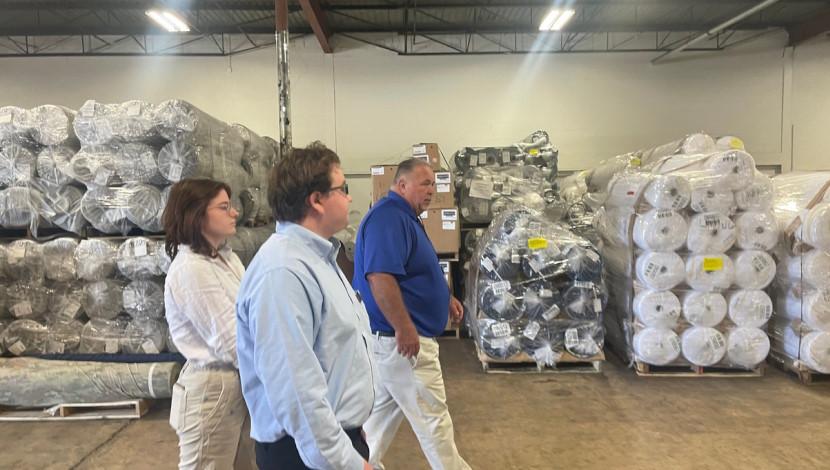
-
Accessible Public Restroom in Downtown Salisbury
Inspiration
The United Nations "recognizes the right to safe and clean drinking water and sanitation as a human right that is essential for the full enjoyment of life and all human rights" (UN Resolution 64/292, 2010). When considering the potential wicked problem that we wished to conquer during our time with the Presidential Citizens Scholars program, one issue facing the Downtown Salisbury area shined above the rest, and that was the issue of an always-available ADA-accessible public restroom. We each approached this project with our own passions, each coming from a very different background, but we quickly found common ground in the idea that each and every individual should have the basic right to clean and safe sanitation.
Whether you are someone with a disability, a small child, or a local resident, everyone can benefit from a public restroom in the Downtown Salisbury area, the issue that we needed to investigate was if the community would support the installation of a public restroom.
Survey
To gauge the community's interest in the addition of a Page 2 Accessible Public Restroom in Downtown Salisbury public restroom in Downtown Salisbury, we created an Institutional Review Board (IRB) approved survey, protocol 131. This survey was then distributed through flyers and via social media posts on Instagram and Facebook. We received grant funding for $240 dollars to advertise on Instagram to promote the survey to individuals within the Salisbury area. We reached approximately 11,548 people and got 165 direct taps on the post. Flyers were hung around the Salisbury University campus, in Downtown businesses, in government buildings, and in local restrooms.
The survey was open from the end of October 2022 until the beginning of April 2023 and received over 500 responses from local residents, business owners, college students, and tourists. Once the survey was closed, the data was then cleaned by Dr. James Fox of the Seidel School of Education at Salisbury University. The cleaning of the data process included getting rid of any survey responses that did not answer the consent question of being over the age of 18, left survey answers blank or otherwise did not provide complete and comprehensive survey results.
Demographics
Based on the over 500 survey responses, 63.1% of responses were those of local residents, 9.2% responses were business owners, 2.7% of responses were tourists, and 25% of responses were college students.
Due to the nature of the survey, individuals could select multiple categories that described them. It was noted that out of the overall responses of local residents, 7% stated that they were both local residents and business owners, 5.2 % stated that they were both local residents and college students, and 87.9% stated that they were just local residents.
Absence of Public Restroom
The survey results indicate that 28.6% of respondents said yes that the absence of an accessible public restroom has negatively impacted their visit to Downtown Salisbury, while 67.2% responded no, and 4.2% did not respond.
Enhance Visitation
The results stated that in the survey results, 61.2% of respondents said yes that a public restroom would enhance their visit to Downtown, while 30.9% said no, and 7.9% did not respond. One example of a comment was "Visitors to the downtown area have asked me where a public restroom is available. Always have to answer there is none!"
Scholars:
- Elizabeth A. Wash - Senior
- Hayden Davis - Junior
- River Myer - Senior
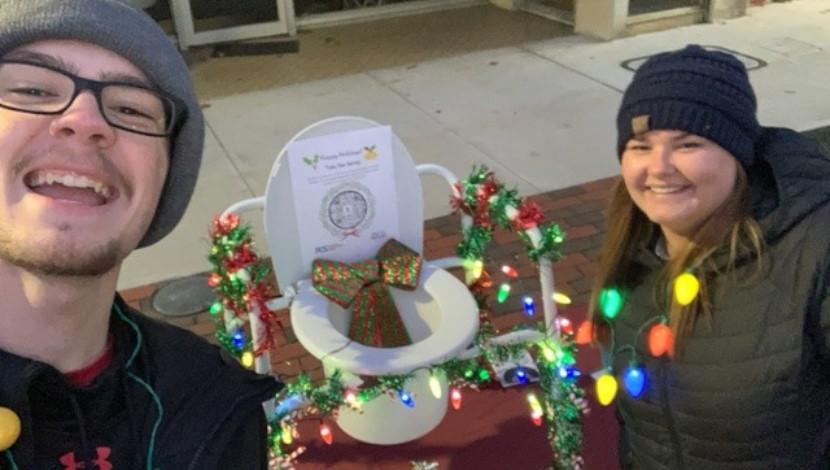
2022 Projects:
-
Opioid Crisis
Project Overview
The purpose of my project is to spread awareness, reduce stigma, and connect those struggling with opioid abuse or those who love someone who is struggling with opioid abuse to various resources within the community that could save lives. In order to accomplish all of the formentioned tasks, I decided the best way to do this was to host an event in the Salisbury community where people could gather to collect information, available resources, and potentially Narcan and Narcan training. This cause is very close to my heart as I have close family members who have struggled with opioid addiction for their entire lives, and I have seen first-hand the impact that this horrible epidemic can have on lives.
My goal is to minimize the impact for other people so they will not have to struggle the way that my family and I have due to this crisis. Through several months of Research and connecting with local community members, I had decided that the best way to take action is to connect local members of the community with various resources and get the message out there about a “miracle drug” called Naloxone or “Narcan.” this drug can be administered through aspirates into the nasal passages and can reverse an overdose and awake and someone who is unconscious due to it. This saves the life of a person who is undergoing an overdose until they can be given the proper medical attention. I first found out about the drug in my time with the Opioid Impacted Family Support Program as a Community Health Worker. This program planted a seed in my mind about a significant solution to a problem that many are facing within our community. After learning about naloxone, I decided to take the next step and reach out to the local health department of Wicomico County and the head of the fire department to learn more about the effects of the opioid epidemic in Salisbury, MD. from the fire department I learned that a large number of opioid overdoses in this area take place in local gas station parking lots, homes in local neighborhoods, and on or around college campuses. From the Wicomico County Health Department, I was able to get in touch with a committee member of the local organization, Wicomico Goes Purple. From there, we had an incredible conversation about the ways that I hope to better the community. She offered me a seat on the steering committee for Wicomico Goes Purple and since then I have been attending every meeting and taking part where I can to learn more about the efforts of this organization in combating the opioid crisis in our community. I feel I've learned a lot from their organization and that resource has been instrumental in the progress of my project. This process has been immensely fulfilling but has not come without its challenges. One of the largest barriers that I have been faced with in my journey towards advocacy and awareness is stigma. Many people have a preconceived notion of substance abuse and the people who are affected. This prevents honest conversation and ultimately, the providing of valuable resources and aid. The mission of my project is to help tear down this barrier one conversation at a time. all of these factors lead to the main idea of my project which is the event. The event will be hosted the second week in April during Drug and Alcohol Awareness Week at the local Newton Street Community Center. At this event, I will be partnering with Wicomico Goes Purple to bring together community members in a safe space where people can receive resources, training, and support from others who understand their plight. The event will go as follows: first, there will be Narcan training provided to those who attend, and in conversations with community members who are involved in “Leave Behind Naloxone” we should be able to acquire a large number of doses to give out to those who attend the event following the training. Second, there will be live speakers to come and share their stories and all of them have received assistance and are now in the business of giving assistance to others who share their struggle. Third, I hope to partner with Food for Flock to provide local community members with canned goods and food if they're struggling financially during this time. There will be trained professionals at this event who can connect those in crisis or who know someone in crisis to the appropriate resources available to them in their area.
Scholars:
- Amanda Thompson - Senior
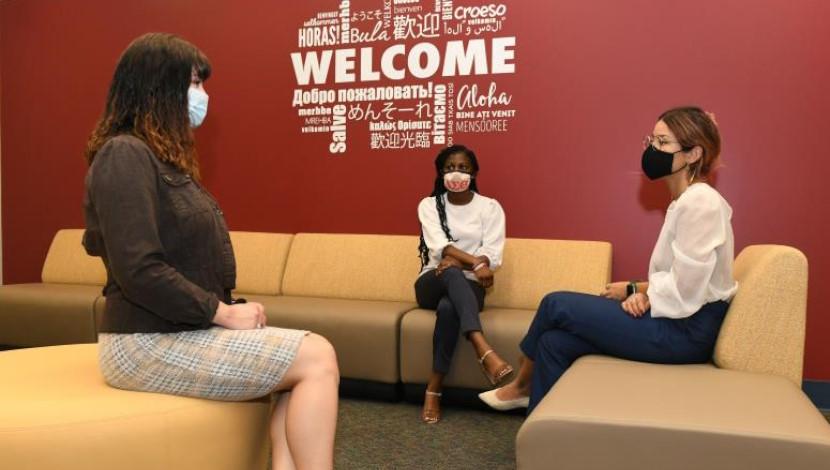
-
Comprehensive Public Transportation Survey of the Delmarva Peninsula
Project Overview
As students of Salisbury University, we understand that there is a significant need for increased public transportation across the Delmarva Peninsula. With this perceived need in mind, it is beneficial to find a way to accurately quantify what is felt by residents of Salisbury and the greater Eastern Shore. As members of the 2022 Presidential Citizens Scholars cohort, we acutely recognize not only the need for equitable forms of public transportation but the effects that their absence has on the quality of life and the engagement of a community. As a result, we hope that, with our survey, we can determine overall accessibility of current public transportation on the Delmarva Peninsula and support of the possible implementation of new and reliable forms of public transportation.
Although our project focus has shifted slightly over the past two semesters, we never lost the focus on the need for local public transportation. Will White has been instrumental in helping us focus our project on local public transportation. After meeting with us early in the semester, Will White has provided us with significant contacts that will be beneficial in the distribution of our survey. His connections with the towns in the Salisbury/Wicomico Metropolitan Planning Organization, which includes Salisbury, Fruitland, Delmar, Hebron, Laurel, Seaford, and Bridgeville, will certainly be helpful in our distribution.
IRB approval is necessary for surveying the surrounding community. Harrison Leon has been instrumental in our receiving IRB approval. A PCS alumnus, Harrison’s project focused on transportation, and his project involved a survey of the surrounding community, so he had received IRB approval previously. Due to his experience with IRB, he looked over our application and gave us suggestions as to what would improve our chances of receiving approval. After receiving IRB approval, we started working on developing our survey through Qualtrics. With the help of Matthew Bernor, who set up the Qualtrics account for our use, we streamlined our survey for accessibility and readability. We also decided that a project poster would be beneficial in the distribution of the survey to catch a person’s eye, as it would be an aesthetically pleasing marketing tool for our survey. This poster included a concise description of the purpose of our survey and a QR code for direct access to the survey itself.
Zakera suggested that we have our transportation survey and project poster translated into Spanish and Kreyol. Johannah Cooper translated the poster and survey into Spanish, while Luc Angelot translated the poster and survey into Kreyol. These translations provided underrepresented communities who may be highly affected by the overall lack of reliable public transportation with a voice for beneficial change.
Scholars:
- William “Max” Kichline - Senior
- Zakera Banks - Senior
- Andrew Wilson - Senior
- Evan Polkinghorn - Senior
- Joseph Fernandez - Senior
- Emma Chapple - Senior
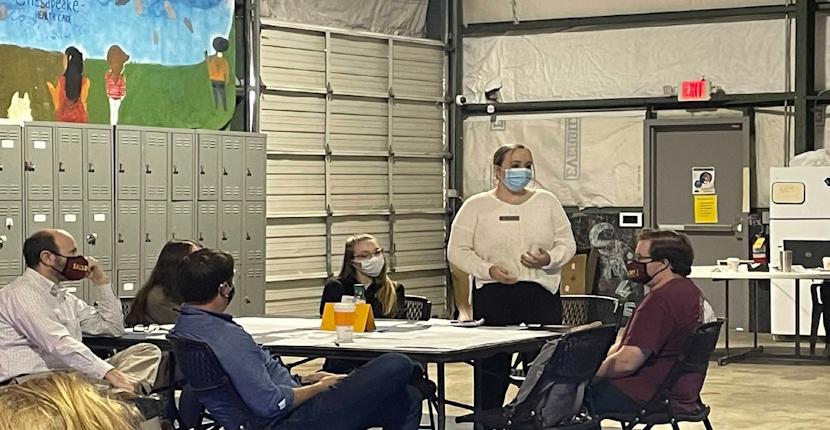
-
Volunteerism at the NSCC
Our Mission
The PCS program holds high expectations that the passions of its students shine through projects that greatly improve the community. The importance of community involvement and education can be shown in a sustainable volunteer program between the Newton Street Community Center and Salisbury University through Fraternity and Sorority Life (FSL). They will directly provide the center with both volunteers and additional programs that will spread awareness of their respective philanthropies. In February of 2022 there will be a pilot program instilled for the month with members of the Panhellenic community within FSL in order to provide the center with the volunteers it needs to succeed. The children of the NSCC will have opportunities to interact with Salisbury students, make connections and be introduced to the national organizations these sororities promote and their importance.
About the Newton Street Community Center
The Newton Street Community Center was most recently renovated in order to meet the immediate needs of the Salisbury community and opened again in the summer of 2021. The center sits on the corner of Newton Street and Light Street in Salisbury and provides the necessary environment for the children and adults of the community to thrive. The center allows students to become engaged in learning while participating in programs and events held by those who partner with the center. The state-ofthe-art kitchen, age-based rooms, music room, miniature library, play-space and the many resources given to or bought by the center allows these children to inch closer to success in both school and within their community. The adult classes offered allows adults in the area to expand their knowledge in order to widen their opportunities. The center’s location, resources, and leaders have allowed it to flourish and improve the lives of many.
Why help is needed
As discussed in the section above, people of all ages have found the community center to be a safe environment to become engaged in their learning and to participate in helpful to their success. The growing center has expanded their available hours and intensity of their programs giving rise to their need for more help to execute these programs. The Newton Street Community Center is in search of volunteers and new programs that will accelerate the success of those using the center.
Rachel Manning is the city of Salisbury’s community relations manager and has hired a limited staff in order to push start the center’s success, but more help is needed. The growing number of those discovering the center and the programs being implemented has created room for volunteers. The center also has some spots within their schedule open to volunteers implementing their own programs and events. These volunteers are necessary in order to keep children engaged, implement programs of their own, aid center leaders in programs already set into action and give the children a sense of security. These volunteers are necessary in order to keep children engaged, implement programs of their own, aid center leaders in programs already set into action, and give the children a sense of security. The center has allowed for members of the community to find a safe environment to work towards their own goals and dreams. In hopes it will give this same sense of fulfillment and importance to the volunteers that allow the community members to thrive.
Scholars:
- Abigail Walsh - Junior
- Madyson Amo - Junior
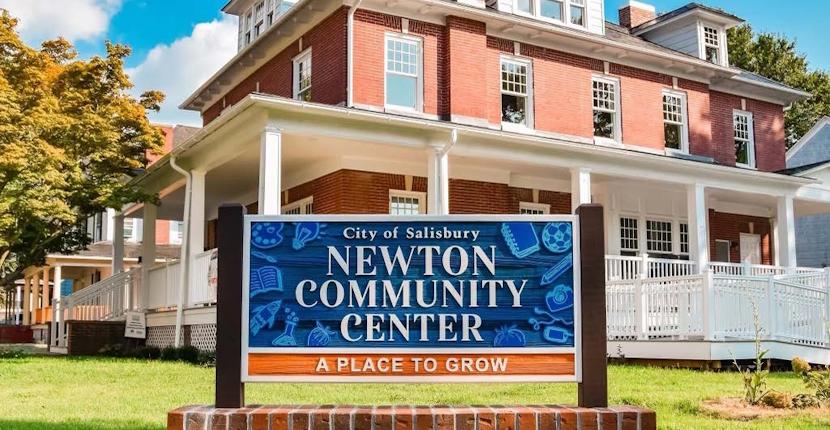
2021 Projects:
-
Accessibility in Salisbury’s Community Centers
Introduction
The Newton Street Community Center aims to be a safe space where tutoring, after-school activities, and adult professional development may be utilized by members of the community. The Historic Camden Neighborhood is earmarked with barriers, including lower-income tax contributions compared to surrounding areas, 16.9% of residents who identify English as their second language, and gentrification from college student housing (U.S. Census Bureau, 2015-2019). For the Newton Street Community Center to achieve its highest level of success by fulfilling the utmost potential of all Salisbury residents, transportation and accessibility programs must be expanded to ensure that this center can serve as many residents as possible. Addressing transportation will require strategic action, including service, advocacy, and policy change (Musil, 2009).
Transportation is among one of the most prominent barriers for accessing the Newton Street Community Center. In a survey of nearby residents, 42.4% have identified a lack of access to reliable, free public transportation to the community center (Blake et al., 2020). It is important to ensure that access to the Newton Street Community Center is as equitable as possible. Equitability requires the addition of accessibility options so that lower-income residents of Salisbury that do not own private vehicles can access the center at the same rate as community members that do own private vehicles. Community centers provide multiple benefits which could create inequities if the center is not accessible to all of the community. One study shows that community centers provide a “substantial contribution [to the] user’s health and well-being [through] access to information, resources, and services” (Colistra, Schmalz, Glover, 2017). Reliable public transportation to and from the Newton Street Community Center will help to foster these benefits for as many community members as possible.
Scholars:
- Abbi Pettinati
- James Reedy
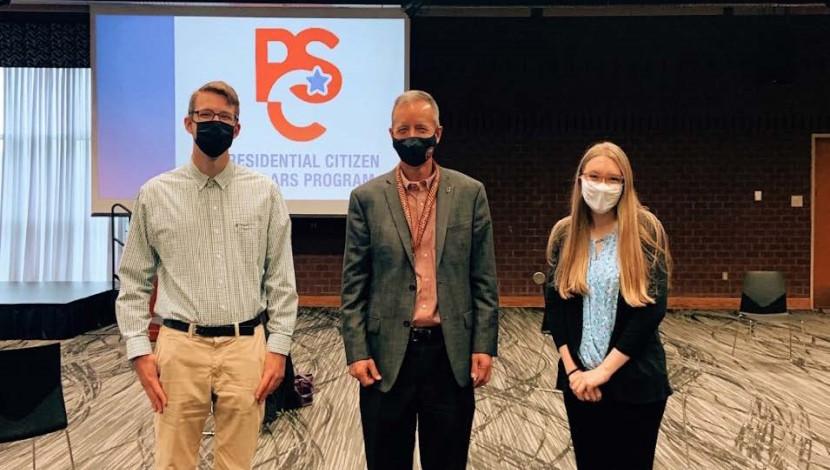
-
Music & Mentoring at the NSCC
Background
Salisbury, Maryland is a college town, and civic partnerships between Salisbury University and the surrounding community are part of what makes this community unique (Weaver, 2021). The North Camden Neighborhood, just north of SU’s campus, has a population of several hundred people that is especially diverse: migrant families, young families, retirees, college students, and invested homeowners who call this neighborhood their home. In 2020/2021, the City of Salisbury launched the Newton Street Community Center (NSCC) to meet the needs of the surrounding community, especially the youth who live in this neighborhood.
The 2020 Presidential Citizen Scholars at Salisbury University partnered with the City of Salisbury’s Mayor’s Office and Community Development Department to conduct a needs assessment survey in the North Camden Community to determine what programming the community wanted to see featured in the NSCC when it opened. According to Blake et al. (2020), the community expressed that they would benefit the most from a childcare program that supports career prep, reading, writing, and art skills. In other words, the Newton Street Community would like to have more opportunities to connect with one another through new means such as liberal arts-based programs. Figure 1. Newton Street Community Center (Salisbury, Maryland) Additionally, Blake et al. (2020) found that over 53% of the homes within the Newton Street Community has at least one child under the age of 18. This means there are more than enough children who would benefit from all kinds of programming within the Newton Street Community Center.
Scholars:
- Dhedhus Anumgba - Junior
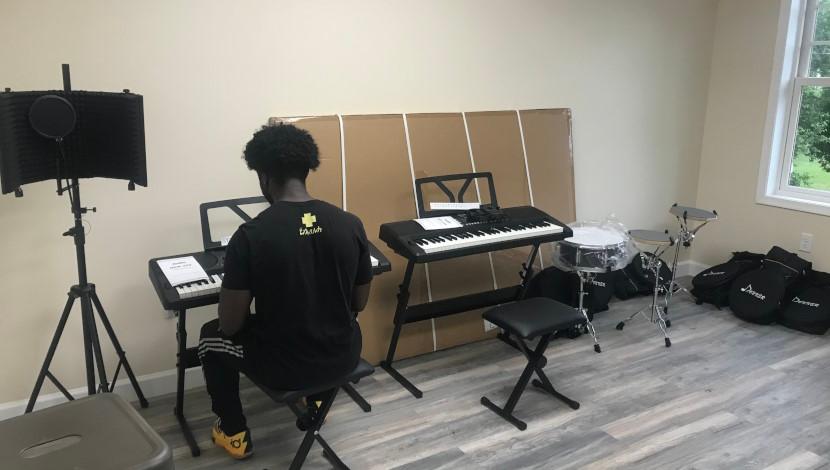
-
Adult Education at Newton Street and Truitt Street
Executive Summary
This Presidential Citizen Scholar (PCS) Capstone Project was a collaborative effort between The City of Salisbury and Wor-Wic Community College to offer Adult Basic Education (ABE) and English as a Second Language (ESL) classes for adults at the Newton Street and Truitt Street Community Centers. The need for these classes stemmed from the results of the 2020 PCS Program’s “Newton Street Community Center Neighborhood Needs Assessment,” which indicated residents’ desire for education and English language skills programming at the Newton Street Community Center (NSCC).
The City runs the centers’ operations, but Wor-Wic will be conducting the classes free of charge. After the city expressed interest in expanding the program to a second location, the program expanded to offer the ABE and ESL classes at Truitt Street Community Center (TSCC). WorWic also has the capacity to offer specialized job training, which could be utilized in the future to further expand the reach of adult education programming at community centers around Salisbury.
Introduction
In 2019, students in the PCS Program at Salisbury University conducted a needs assessment survey of residents in the Newton Street neighborhood (Blake, et al., 2019). The survey was distributed in association with the Newton Street Community Center, which is run by The City of Salisbury and was beginning renovations at the time. The purpose of the survey was to determine what programs and services the community center could offer that residents felt would be beneficial. According to LeGates and Stout (2015), community participation is crucial to establishing a successful public space. Thus, engaging with residents through the survey was an important step in making sure the NSCC will effectively serve the community where it is located.
The survey determined that programming around education and language skills was in high demand within the Newton Street neighborhood. This can be seen in Figures 1 and 2. Addressing this demand required the involvement of two local institutions: The City of Salisbury and Wor-Wic Community College. The collaboration of these two institutions meant ABE and ESL classes could be offered at the Newton Street and Truitt Street Community Centers.
Scholars:
- Aaron Stiegler
-
Paint ‘N’ Inspire: Encouraging Community Connection through Art
Abstract
The aim of this project was to address the needs of families and children residing within the Newton Street neighborhood in Salisbury, MD. In 2019, the 2020 Presidential Citizen Scholars (PCS) cohort conducted an IRB-approved study to assess the needs of this community. According to the findings, parents from the Newton Street community vocalized the desperate need of mentoring programs for their children (Blake et al., 2020a). Additionally, Liberal Arts activities were the most popular after-school programs and seen as the most “in need of support” (Blake et al., 2020b). Moreover, the after-school activities that were highly requested by parents included academic tutoring, sports, theater clubs, social clubs, and mentoring programs. For our PCS Capstone Project, we hosted the “Paint ‘N’ Inspire” event in hopes to address some of the needs of the community while providing an opportunity for families and children to socialize and connect with the various resources the Newton Street Community Center (NSCC) has to offer. Lastly, we provided further suggestions for future PCS cohorts, Student Government Association (SGA) approved clubs, and sororities or fraternities to sustain this event for many years ahead.
Introduction
Our project, Paint ‘N’ Inspire, was designed to create an opportunity for the youth surrounding the Newton Street Community Center. Our first and foremost goal was for the children to be able to have the chance to learn art skills. The project provided art supplies to those who participated in the event. Based on past research, the drive for art is well desired within the community. For the future, the project will allow children of the community to better understand the resources available to them through the Newton Street Community Center. When the event becomes more widely known on an annual basis, it should be turned into an after-school event.
Scholars:
- Jamie Parkinson
- Ines Tchienga
- Sandra Zelaya
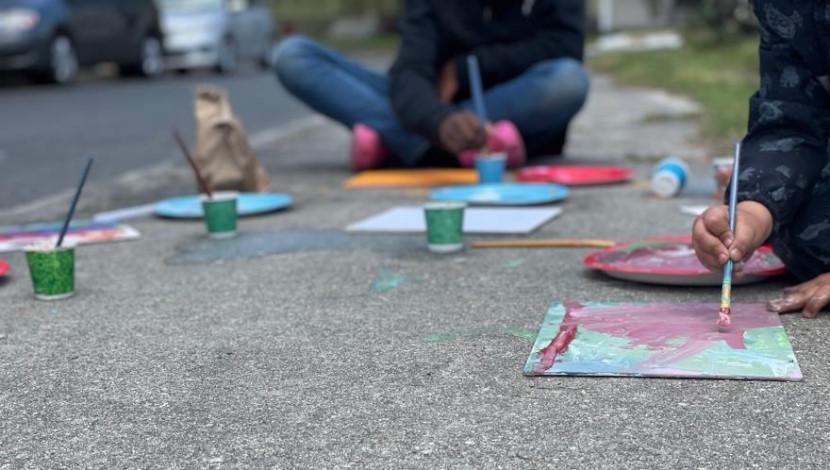
2020 Project:
-
Newton Street Community Center
Background
The city of Salisbury is currently renovating a building to become a community center that is in close proximity to Salisbury University’s campus. The focus of the center is to expand the amount of activities and opportunities for the youth. At the beginning of the fall 2019 semester, Salisbury University’s Presidential citizen scholars (PCS) met with city leaders aiming to assist with establishing programs. To ensure programs were created that would interest the community, a needs-based assessment was completed.
Conclusions
From the survey, we can see a large interest in art based programs at the center. According to the city of Salisbury, art programs are available at various locations, however from figure 3, it is evident that transportation to these locations could be an issue. In addition, from the survey we found that many members of the community were/would be interested in attending programs hosted by Salisbury University. This suggests that a program at the community center backed by the university would be receptive amongst community members.
